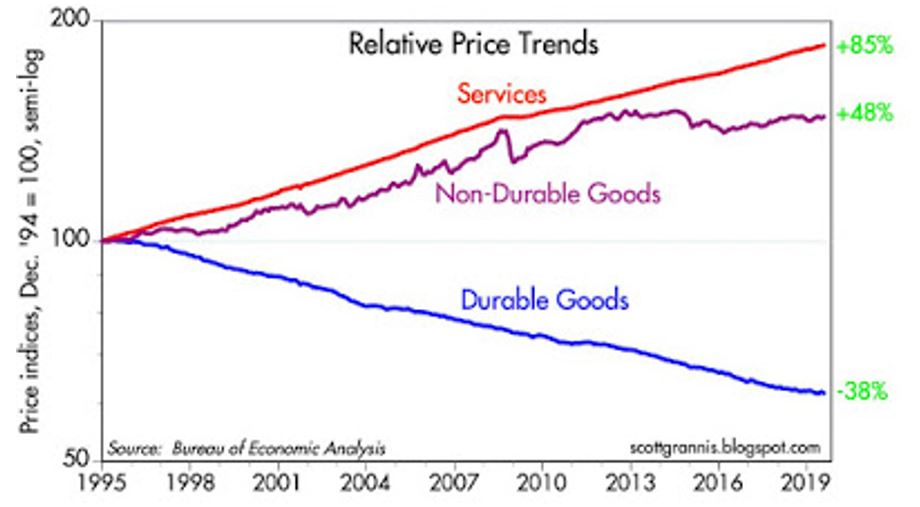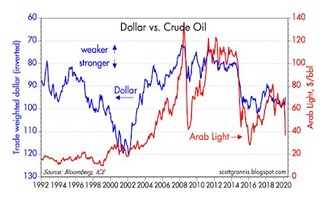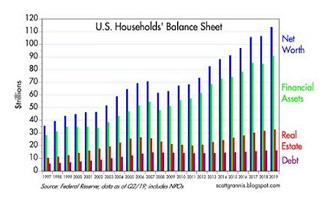However, what is not appreciated, or at least is not mentioned, is that consumer purchasing power has risen substantially over the past 25 years.
Scott Grannis, the Calafia Beach Pundit, notes in his latest article, that wages and salaries, which are the main components of the Services sector, have gone up by 85% since 1995. At the same time, the price of Durables (big ticket items like fridges, stoves, TVs, computers, and equipment) have declined by 38%. Non-Durables (food, clothing, gasoline) have gone up but their 48% gain is well below Services.
The following chart shows the trend in prices since 1995 in Services, Durables, and Non-Durables.
It was in the 1990s that China emerged on the world’s stage as a provider of inexpensive products. By being able to pay low wages, China eventually took over the supply of cheap products to the entire Western World. This also had the effect of hollowing out manufacturing and industrial activity in many countries. At the same time, this proliferation of inexpensive goods in world markets raised the productivity of all workers globally, and it resulted in a significant increase in global economic prosperity.
Mr. Grannis also attributes the prolonged decline in the prices of Durables to the acceptance by businesses and individuals of the value and use of the computer. Although the personal computer entered the scene in the early 1980s, it was not until the middle of the 1990s that there was widespread adoption of the computer as a business tool and as an entertainment medium.
Computer deflation may be coming to an end, as shown in the next chart.
The chart suggests that it seems unlikely that computers and associated equipment will become ever-cheaper in the future.
With regard to Non-Durables, the first chart shows that the flat-line of their prices has stayed fairly constant over the last 7-8 years.
All-in-all, wages as measured by the Services sector continue to go up faster than the prices of either Durables or Non-Durables. This increased purchasing power continues to provide the benefit of a rising standard of living in the United States.
You can read the entire Calafia Beach Pundit article by clicking:
http://scottgrannis.blogspot.com/2019/09/why-living-standards-continue-to-rise.html







